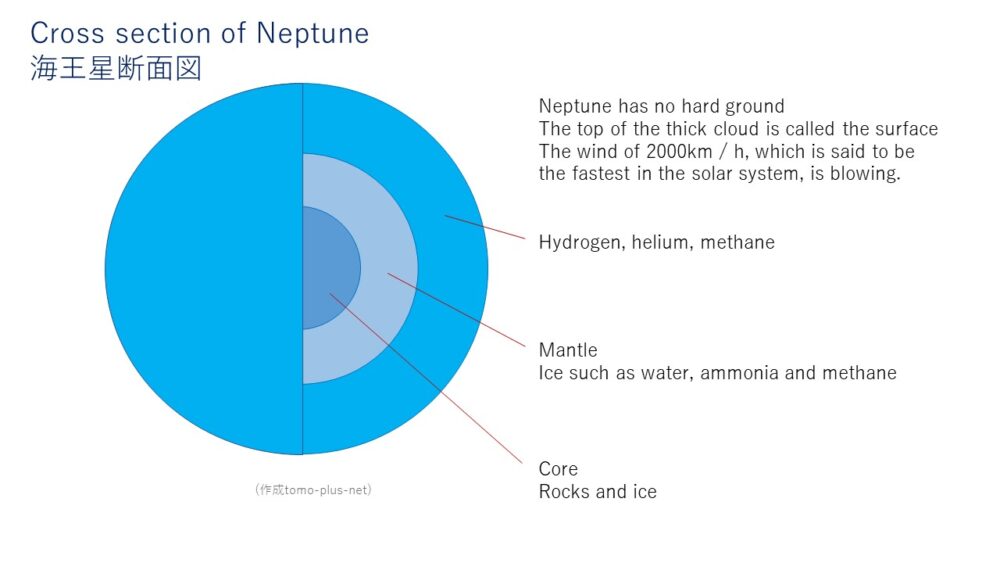Today I will write about Neptune.
Neptune was discovered by the German astronomer Johann Galle in September 1846 at the Berlin Observatory. This star is said to have been discovered based on calculations. French astronomer Alexis Bouvard inferred from the unexpected changes in Uranus’s orbit that Uranus’s orbit is misaligned due to the effects of the gravity of an unknown planet. After that, Johann Galle discovered it at a position within the range predicted by Urbain Le Verrier. By the way, September 23 is the day when Neptune was discovered, so it is Neptune’s day.
It is the farthest planet from the Earth and the only planet in the solar system that cannot be observed with the naked eye.
With 17 times the mass of the Earth, it is the densest gas planet in the solar system. The radius is 24,622 km, which is about four times that of the earth! The distance from the earth is 4.35 billion km, and the distance between the Sun and Neptune is about 4.5 billion km.
Neptune’s rotation time is about 16 hours, which seems to be 8 hours shorter than the Earth’s rotation time. Gravity is about 1.15 times that of the earth, which is not much different from the earth. When you weigh yourself on Neptune, it feels like it’s getting a little heavier.
Voyager 2, which left Earth in 1989, took 12 years to reach Neptune. Observations of Voyager 2 revealed that Neptune has a ring. Its ring consists of five and is made up of organic compounds produced by radiation.
It is said that strong winds reaching 2400 km / h are blowing over Neptune. This is twice the speed of sound! If you throw something in it, it will quickly shatter. It’s scary.
The orbital period is amazing. It is said to be about 165 years, that is, one season lasts for about 40 years. 40 years each in spring, summer, autumn and winter. If we were born here, we would only be able to enjoy three seasons at most.
Neptune, like Uranus, is so called a “giant ice planet” that its main constituent is “water”. It seems to occupy 65%.

I drew this picture. Is it easy to understand?
If you cut Neptune in half and look at it, the core part is mostly rock, iron, nickel and other metals, and the mantle part is water, ammonia, methane and other ice. The outer layer is made up of components such as hydrogen, helium, and methane.
The temperature at the center of the nucleus is 6700 degrees Celsius, and the surface of the earth is said to be below minus 200 degrees Celsius. Neptune looks blue not because it is ice, but because it contains methane in its surface. This is because methane has the property of absorbing red and reflecting blue. Uranus also contains methane, so it looks blue in the same way.
I wrote earlier that it is a “giant ice planet”, but Neptune is so far from the Sun that its light hardly reaches it. It is as dark as the dusk of the earth.
Next time, it will be a little difficult, but I would like to write about the temperature and situation from the surface to the core.





